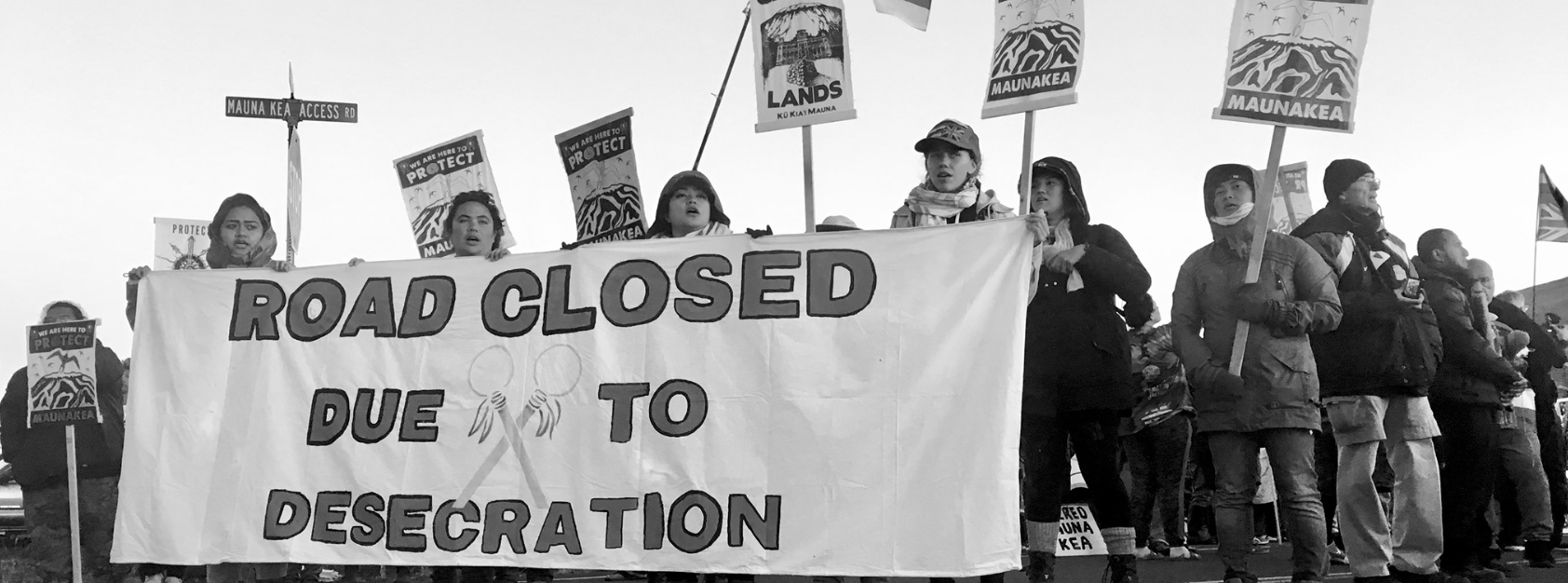On August 18, Hawai’i Senator Kalani English spoke out against the construction of the Thirty-Meter Telescope (TMT) on the top of Mauna Kea, the tallest peak in Hawai’i, and a mountain considered sacred to Native Hawaiians.Senator English stated, “the Thirty-Meter Telescope controversy atop Mauna Kea is not a new issue. It is a part of a forty-year struggle to address mismanagement by the University of Hawai’i of a site considered sacred and environmentally significant.”
Former State Representative Kaniela Ing has also expressed his objection to the TMT,citing massive environmental destruction as a result of similar projects in the past. “What I keep hearing is, ‘It’s just a telescope, it’s not a pipeline’ – no,” says Ing. “This is an 18-story massive structure that has a footprint of at least six football fields in a county that only allows 6-story buildings. And it’s in a conservation district. So even if […] you care about the environment at all, this is a really dangerous precedent and our Mauna has already seen oil spills from past telescopes.”
Mauna Kea is a sacred burial and ceremonial site, known as the piko, or “umbilical cord” of Kānaka Maoli, the Indigenous people of Hawai’i. On July 10th, after the construction of the TMT was announced to begin the week of July 15, a group of activists arrived at the base of Mauna Kea to peacefully protest the $1.4 billion project and protect Mauna Kea from further desecration. The protesters included Native Hawaiians known as kūpuna, or “elders,” and k’iai, or “protectors.” For the past six weeks, between 1,000 and 2,000 anti-TMT activists have gathered and camped at the base of the mountain,blocking the Mauna Kea Access Road.
On July 17, police in riot gear arrested 35 kūpuna, who were protesting peacefully by blocking construction vehicles from passing through the access road. The kūpuna were released shortly after and charged with “obstruction of government operations.” That same day, Hawai’i governor David Ige issued an emergency order that granted greater authority to police to remove activists from Mauna Kea.
The TMT, if built, would be the world’s largest telescope, situated on a 13,796-foot summit. However, Indigenous activists and k’iai emphasize that this project would further desecrate Mauna Kea, as the mountain is already home to 13 telescopes in 12 research facilities. Since 1964, the land on which these facilities were built has been managed by the University of Hawai’i, which leases the land from the State of Hawai’i for $1 a year, and subleases this land to multi-national, government funded research facilities for the same amount. The university originally leased the area for the purpose of building one telescope, but has since mismanaged the land and ignored the concerns and protests of Native Hawaiians.
Pua Case, a Native Hawaiian activist who has been fighting against the construction of the TMT for the past decade, shared on Democracy Now! that despite failing to meet the eight criteria required to build in a conservation zone, the TMT project permit was approved by the Hawai’i Supreme Court in 2018. Case also clarifies that Native Hawaiians are not against science, as the media often suggests, but against the destruction and desecration of a sacred mountain. Kēhau Lyons, another Native Hawaiian activist, agrees: “Hawaiians are not anti-science, we are anti-desecration.”
Anti-TMT activists also emphasize that their demonstrations are part of a greater struggle for Indigenous sovereignty, as well as ongoing resistance against colonialism. This resistance extends back to 1893, when the US government illegally invaded Hawai’i, overthrew the Hawaiian government, and violently stole the land from Kānaka Maoli. Activists highlight the ways in which the TMT project exemplifies how the US continues to benefit from colonial violence enacted against Native Hawaiians, the historic suppression of Native Hawaiian culture and language, and the continuous desecration of Indigenous land. In the 1970s, a period known as the Hawaiian Renaissance was marked by Indigenous resistance and political activism as Native Hawaiians fought for autonomy and sovereignty, as well as an end to the US military occupation of the island of Kaho`olawe. The island was being used as a target for bombing drills, a practice the US military only ended in the 1990s. Some Native Hawaiians who were present at the protests in the 1970s are also present at the demonstrations on Mauna Kea today.
From Standing Rock to Wet’suwet’en, many more activists defending sacred Indigenous land and water across the globe have expressed solidarity with those at Mauna Kea. As the Indigenous resistance against TMT continues, the defenders of Mauna Kea encourage those abroad to stand in solidarity with their struggle against the desecration of sacred land and for Indigenous sovereignty.
Indigenous activists have also encouraged students from universities that are members of The Association of Canadian Universities for Research in Astronomy (ACURA), such as McGill, to urge their universities to divest from the TMT. Ashley Bach, former president of Indigenous Student Alliance at McGill, stated, “just because it isn’t happening in Canada, doesn’t mean that it doesn’t matter.” Eve Tuck, a professor at the University of Toronto, added, “universities cannot claim to be reconciling with Indigenous communities when they are using armed police to intimidate, arrest, and threaten Indigenous peoples in the name of research.”
For more information on Mauna Kea and how to get involved, visit protectmaunakea.net

